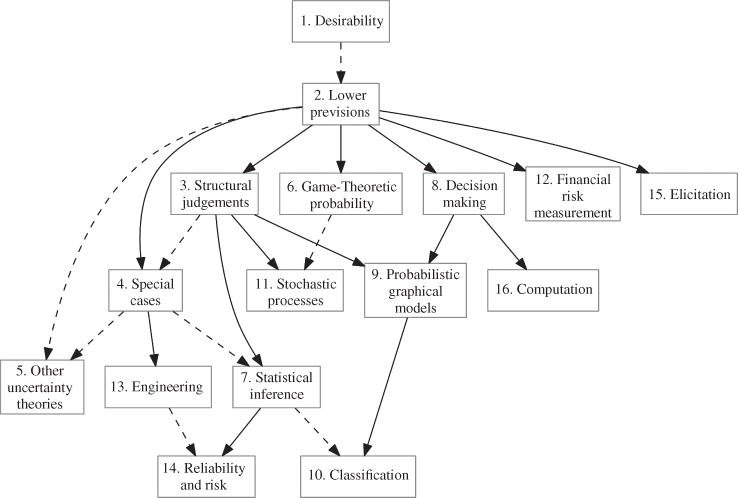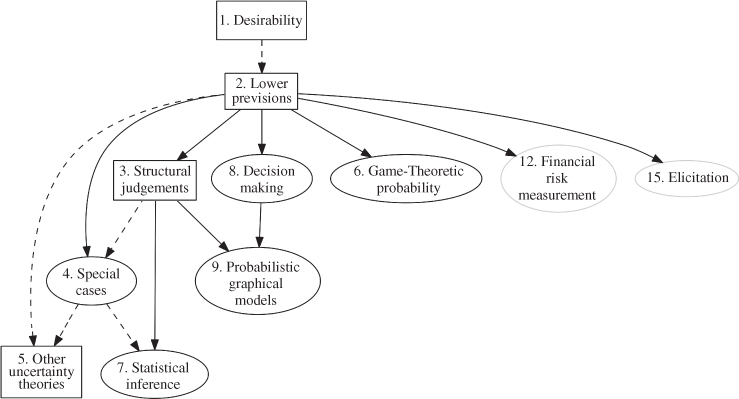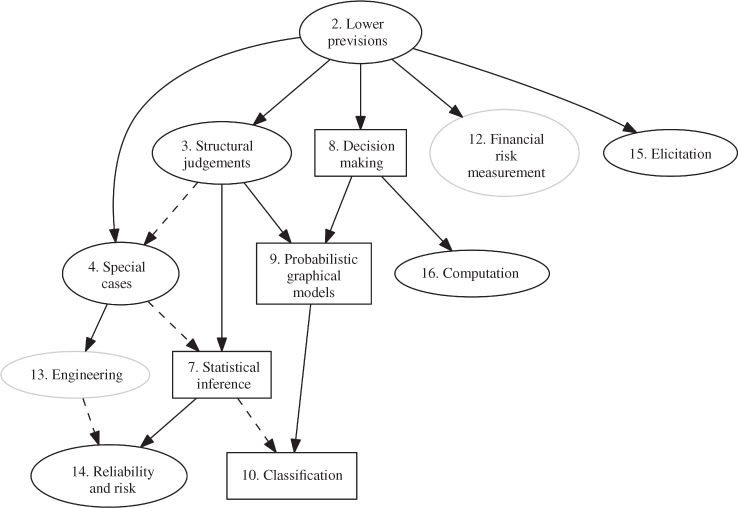Guide to the reader
An overview of the logical structure of the book is given in the diagram below (Figure 1). A full arrow from one chapter to another indicates that the former is intended to be read first, as the discussion in the latter relies on ideas and notions discussed and introduced there. A dashed arrow identifies a weaker dependence, and merely indicates that one chapter can provide more context for, a better understanding of, or even a different way to motivate the discussion in another chapter.

Figure 1 Flow diagram: Logical structure of the book.
Although the chapters are closely interrelated, we also have tried to make the book suitable for more selective reading, trying to accommodate readers with different focus and aims. When designing the book, we had in particular three types of readers in mind, namely:
- Mathematicians mainly interested in foundations of uncertainty (see Figure 2),
- readers mainly interested in statistics, data analysis and machine learning (see Figure 3), and
- applied probabilistic modellers (see Figure 4).

Figure 2 Flow diagram: Mathematicians interested in foundations of uncertainty.

Figure 3 Flow diagram: Readers interested in statistics, ...
Get Introduction to Imprecise Probabilities now with the O’Reilly learning platform.
O’Reilly members experience books, live events, courses curated by job role, and more from O’Reilly and nearly 200 top publishers.

